22 January 2024 was the 100th anniversary of the first ever Labour government taking office. To mark this historic moment, the museum team selected a number of objects reflecting the stories and milestones of the last century.
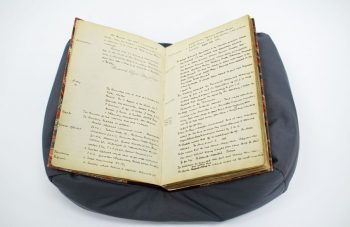
This is one of the most significant documents in the archive at PHM, because it captures the steps that were put in place to bring cohesion and unity to the growing labour movement of the 19th century, following the extension of the vote to working men. The Labour Representation Committee was an alliance of the Trades Union Congress (1868-present), Independent Labour Party (1893-1975), Social Democratic Federation (1881-1911), and Fabian Society (1884-present) that would lead to the founding of the Labour Party.
Where can you see this item or find out more?
This document is not currently on public display. Contact archive@phm.org.uk to arrange a viewing.
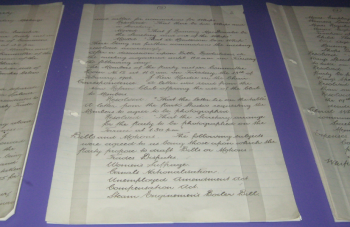
The Labour Representation Committee won 29 seats in the 1906 general election and at the first meeting after these results, on 15 February 1906, it agreed to become the Parliamentary Labour Party. It is this moment that is recorded in these handwritten minutes, which are on display for visitors to People’s History Museum to see.
Where can you see this item or find out more?
This document is on display in Gallery One.
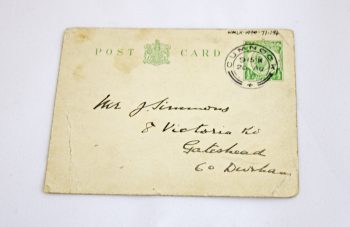
Recognised as the founder of the Labour Party, Keir Hardie (1856-1915) is a huge figure in political history, serving as the party’s first parliamentary Leader from 1906 to 1908. Amongst the Keir Hardie objects held at PHM is this handwritten postcard. Hardie writes to his ‘young comrades’ in Gateshead to thank them for their birthday wishes and to assure them he is ‘fighting against this sinful [First World] war which, like all wars, has been forced on the working class by our deceitful and unscrupulous statesmen’.
Where can you see this item or find out more?
This postcard is not currently on public display. Speech notes, flyers, and an oil lamp that belonged to Keir Hardie are on display in Gallery One.

Margaret Bondfield (1873-1953) was one of the Labour Party’s first female MPs, having been elected at the 1923 general election alongside Susan Lawrence and Dorothy Jewson. Her history making would continue in 1929, when she was appointed Minister of Labour, becoming the first female cabinet minister of any political party. This image of Margaret was taken just a few years before she took office.
Where can you see this item or find out more?
This photograph is not currently on public display. PHM’s archive holds policy documents, pamphlets, and general election material. Contact archive@phm.org.uk to arrange an appointment.
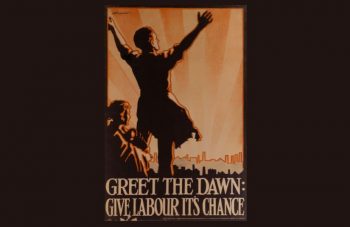
One hundred years on and this poster has become a real star of its era, regularly appearing on lists of iconic political posters. In 1922 the Labour Party had a competition to find new posters; this poster won and was subsequently used in the 1923 and 1929 general elections.
Although the dawn that the poster references was short lived, one notable achievement from the administration was the Housing Act (1924) which created subsidised local authority housing to help ease the post war housing crisis. Benefits for pensioners and the unemployed were increased, agricultural wages were raised, and there were also reforms to the education system.
Where can you see this item or find out more?
This poster is on display in Gallery One.
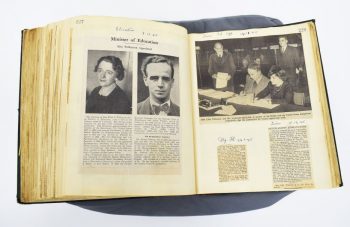
A former journalist born in Manchester, Ellen Wilkinson (1891-1947) was one of the first female Labour MPs, standing initially for Middlesbrough between 1924 and 1931, and then Jarrow from 1935 until her death in 1947. PHM holds a number of objects and images connected to Ellen Wilkinson – amongst the most significant being her scrapbooks. There are six in the museum’s collection, full of press clippings from around 1924 until her death, which offer a fascinating record of her work.
Where can you see this item or find out more?
The Ellen Wilkinson scrapbook covering the period 1928 to 1930 is on display Gallery One.
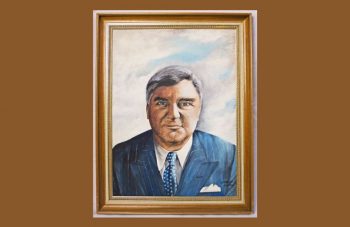
Aneurin Bevan (1897-1960) was Minster for Health between 1945 and 1951, under the leadership of Clement Attlee as Prime Minister. In this role he oversaw the creation of the National Health Service (NHS); providing free medical care to ‘universalise the best’ for the entire population based on need, rather than the ability to pay. In doing so Britain made history as the first western society to offer a free medical service for all. This portrait by W P Alston reminds us of Bevan’s legacy.
Where can you see this item or find out more?
This painting is not currently on public display. Contact collections@phm.org.uk to arrange a viewing.
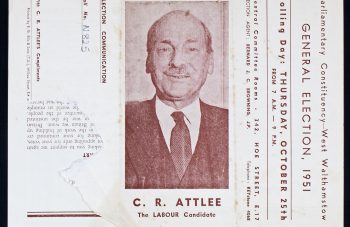
Clement Attlee (1883-1967) was Leader of the Labour Party from 1935 to 1955 and served as Prime Minister from 1945 to 1951. He achieved far reaching innovations with the introduction of the National Health Service (NHS), passing of the National Insurance Act, nationalisation of the coal industry, electricity and railways, creation of a National Parks system, and many other reforms. He would lose the 1951 general election – when this leaflet was created – a result that has been explained by internal fractions and a party that had worked itself to exhaustion.
Where can you see this item or find out more?
This leaflet is not currently on public display. PHM’s archive holds policy documents, pamphlets, and general election material. Contact archive@phm.org.uk to arrange an appointment.
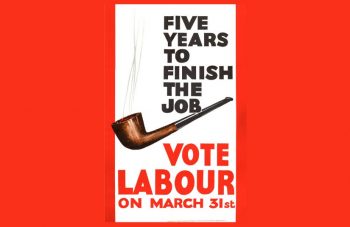
Harold Wilson’s (1916-1995) trademark pipe is an intriguing object, used by the Prime Minister (1964-1970) to convey homely familiarity, but also as a tool to hide behind when faced with a difficult question – he would use the lighting of the pipe as a means of distraction. It was rumoured that he only smoked the pipe in public, preferring cigars in private, but his family say this wasn’t true. So iconic was the pipe that it was used in posters for the 1966 general election such as this one.
Where can you see this item or find out more?
This poster is not currently on public display but a similar poster is on display alongside Wilson’s pipe in Gallery Two.
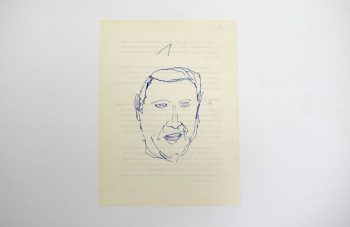
PHM’s archive holds a number of ‘quirky’ objects, including this doodle of Edward Heath (1916-2005), which was penned by Labour MP Denis Healey (1917-2015). Healey, who would go on to be Chancellor of the Exchequer, was a prolific doodler – also in the collection is an image of Clement Attlee (1883-1967).
Where can you see this item or find out more?
This document is not currently on public display. Contact archive@phm.org.uk to arrange a viewing.
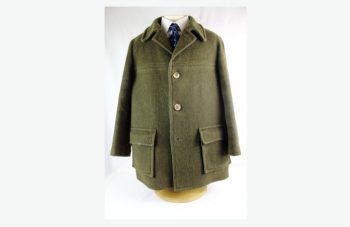
This coat possibly generates the most fascination of all the objects on display at People’s History Museum. This is largely because of the controversy generated when it was worn by the Leader of the Labour Party, Michael Foot (1913-2010), to the National Service of Remembrance at the Cenotaph in London on Remembrance Sunday in 1981. It was described in the media as a ‘donkey jacket’, unbefitting of such an occasion. However, it was in fact a woollen jacket, purchased by his wife from Harrods especially for the service, and he was praised by the Queen Mother for his choice of warm coat. In amongst the letters of complaint he received was a £1 gift voucher towards the purchase of a replacement!
Where can you see this item or find out more?
The coat is on display in Gallery Two. PHM’s archive holds the personal papers of Michael Foot, which you can make an appointment to view by contacting archive@phm.org.uk.
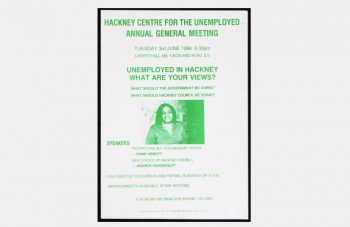
Diane Abbott was the first Black woman elected to parliament. She was elected as MP for Hackney North & Stoke Newington in 1987, prior to which she was a councillor for Westminster City Council, when this flyer was produced. In 2018 a portrait of Diane Abbott (on loan from Houses of Parliament) appeared in the exhibition Represent! Voices 100 Years On at People’s History Museum. The exhibition reflected on the centenary of the Representation of the People Act (6 February 1918) by asking what progress had been made since.
Where can you see this item or find out more?
This leaflet is not currently on public display. PHM’s archive holds policy documents, pamphlets, and general election material. Contact archive@phm.org.uk to arrange an appointment.
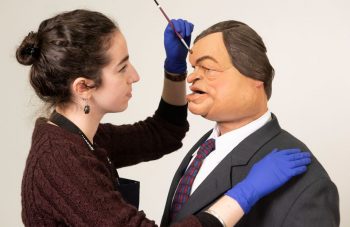
‘Spitting Image’ achieved legendary status in the 1980s and 1990s, as a satirical TV programme that became a cultural phenomenon. Those in the public eye came under the scrutiny of caricaturists Roger Law and Peter Fluck, and this included Labour Party MP and Deputy Leader of the Labour Party, the late John Prescott, who was a headline maker in his own right. There are two ‘Spitting Image’ puppets in the collection (Michael Foot and Harold Wilson) and this puppet of John Prescott has been loaned to the museum by his family.
Where can you see this item or find out more?
This puppet is not currently on public display. Contact collections@phm.org.uk to arrange a viewing.
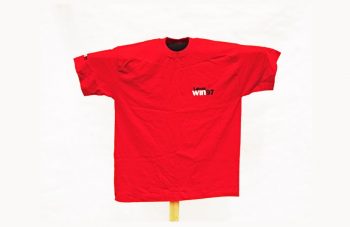
The first time we heard the words ‘New Labour’ was in Tony Blair’s conference speech in 1994. In 1997 New Labour would go on to win a landslide victory at the general election after 18 years of Conservative government. This t-shirt, with its logo ‘Labour Win 97’, is one of many items created for the campaign.
Where can you see this item or find out more?
This t-shirt is not currently on public display. PHM’s archive holds policy documents, pamphlets, and general election material. Contact archive@phm.org.uk to arrange an appointment.
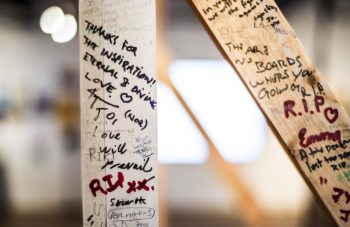
The Jo Cox Memorial Wall features the handwritten notes of hundreds of people, including children. It was erected outside the Houses of Parliament in the days following the murder of MP Jo Cox on 16 June 2016. When Jo made her maiden speech in the House of Commons on 3 June 2015, she said, “We are far more united and have far more in common than that which divides us”. The kinder world that Jo believed in was explored in an exhibition and programme of community engagement at PHM throughout 2021.
Where can you see this item or find out more?
This object is not currently on public display, but you can view a 3D digital scan of the Jo Cox Memorial Wall.
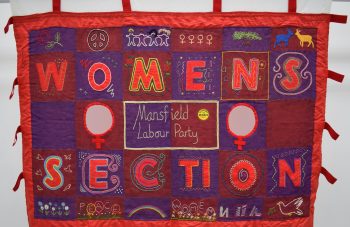
Part of PHM’s extensive collection of banners, this banner was created in a workshop at the museum. It has appeared on demonstrations for a range of causes including the People’s March for Jobs, anti-racism, Jobs for Sacked Miners, and against the Poll Tax. It represents an area of the country, Mansfield, which made history in 2017 when after 94 years of representation by the Labour Party, voters elected a Conservative MP for the very first time.
Where can you see this item or find out more?
This banner features in the 2024 Banner Exhibition, on show from 1 February to 30 December 2024.
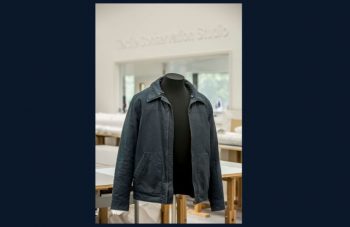
This jacket was worn by the Labour Mayor of Greater Manchester, Andy Burnham, for a press conference on 20 October 2020 where he pleaded with the government to increase the funding given to the Greater Manchester region as it struggled with the harshest Covid-19 restrictions – without a support package for businesses and low paid workers. The Mayor’s sartorial choice (of what was described as a ‘dark navy workers’ jacket’ rather than a suit) drew much interest, with the media coining it as the ‘king of the north’ jacket.
Where can you see this item or find out more?
The jacket has been loaned to the Science Museum Group for its exhibition ‘Injecting Hope: The race for a COVID-19 vaccine‘ and will go on display when the exhibition locates to the Science and Industry Museum in Manchester from 19 July to 17 November 2024.